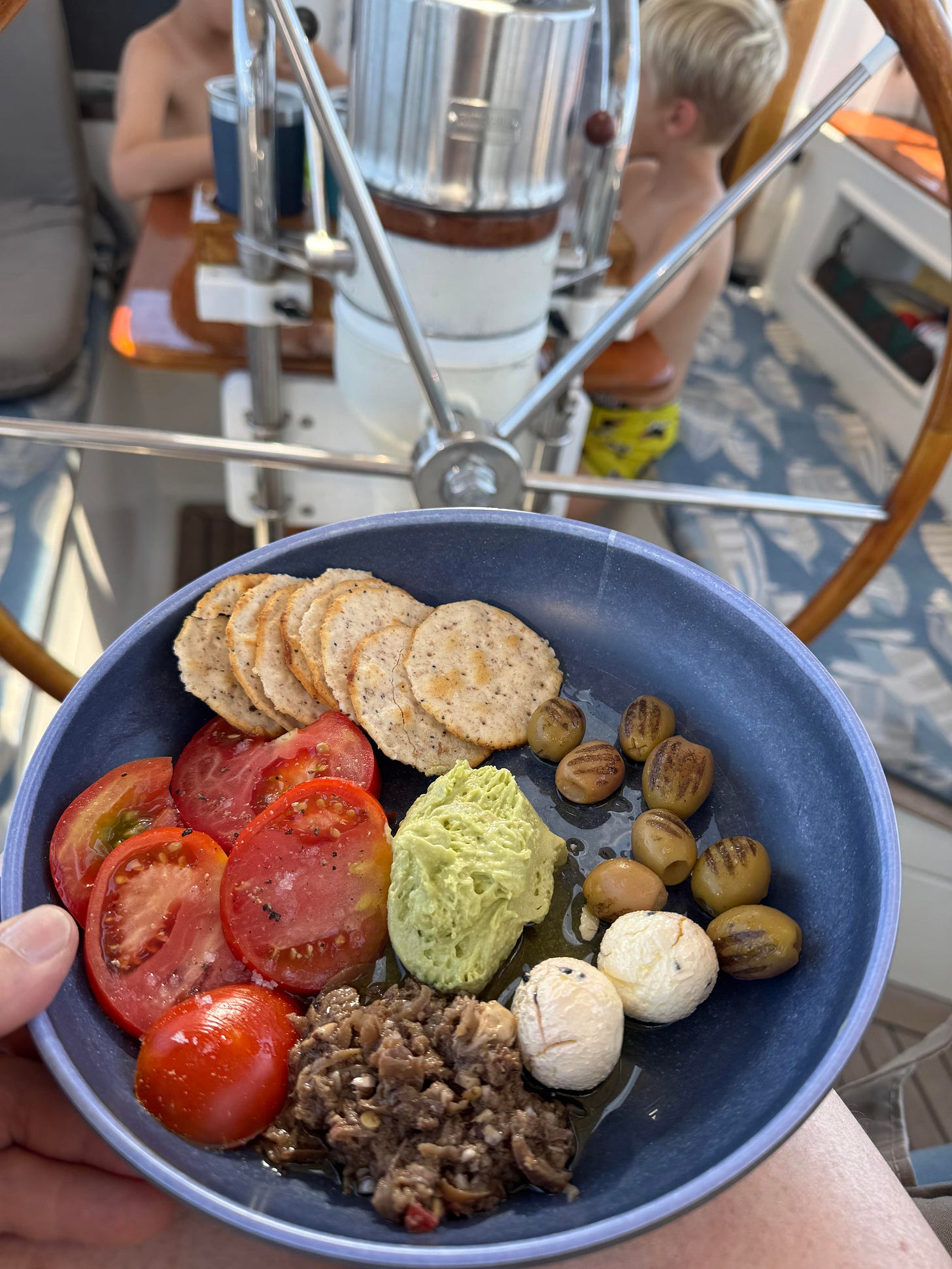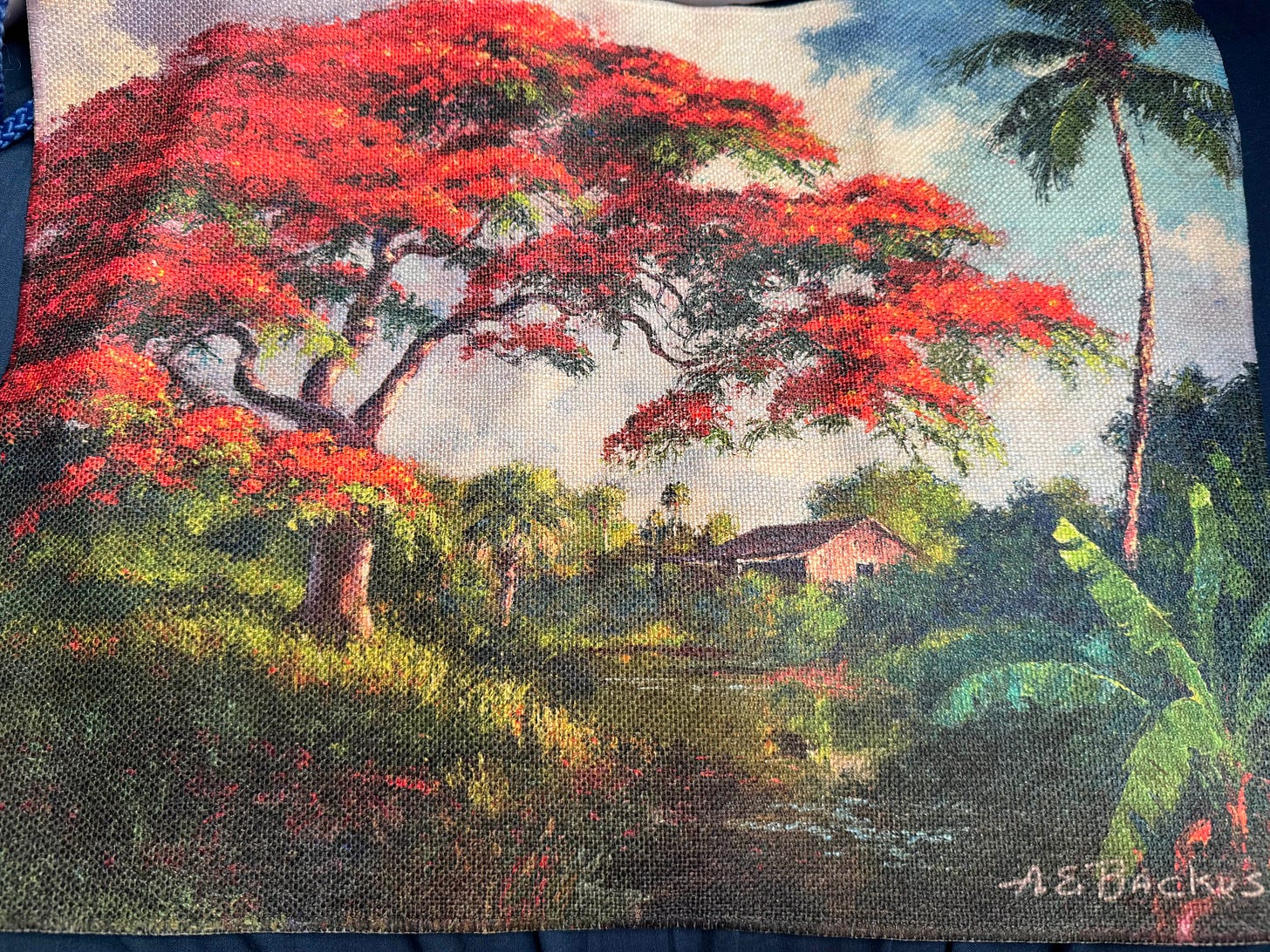Arriving by sailboat from the Bahamas to Florida there’s only one thing you want.
Two things, actually.
Shade and air-conditioning.
Even before the anchor sets, she reads that Fort Pierce has a museum devoted to Florida’s pre-eminent landscape painter, and she knows that if she makes only one stop in town, it will be to the A.E. “Bean” Backus Art Museum and Gallery.
Do the five-year old and the seven-year old want to go to the outdoor farmers’ market in the midday sun with their parents, or do they want to go to the air-conditioned art museum a stone’s throw from the dinghy dock?
The five-year doesn’t miss a beat.
“The art museum.”
If any other five-year-old male in history has ever answered similarly, she wants to meet him, especially when you consider that this five-year old has a third option, the manatee center. Most kids would jump at that prospect, but these sun-baked youngsters are no dummies; they know the manatee center likely involves outdoor time, and they’re not having any more of that.
All any of the three really wants is icy indoor time. The seven-year old, like the sixty-five-year old, doesn’t like the heat, so the decision is swift and unanimous; call it a mutiny if you will. These three will take on the art museum, while the captain and first mate head to the farmers’ market. (Don’t worry. It all works out in the end. The foodies enjoy their mission and then, back on the boat, the art-aficionados make out like bandits, sampling basil hummus, tiny scoops of flavorful goat cheese, za’atar pita chips, grilled olives, baklava, fresh snap peas and broccoli crowns.)
Looking at landscape paintings is like being outdoors, only without the bugs or the heat. Any museum, anywhere in the world, she’ll happily take in landscapes, seascapes, and portraits—those are her genres.)
She isn’t sure if the kids know what a landscape painting is, but they have only to hear “air-conditioning” to be one hundred percent onboard.
About to pull open the museum door, she considers the merits of an “inside-voices-only” speech, but seeing that these two children look closer to sunstroke than bad behavior, she skips it. At this point, they’re game to watch the paint dry on the artist’s canvas, as long as there is air-conditioning.
“We can go to see the Backus paintings in the back room first, or we can go to see the exhibit by the “Highway Men—” artists that Bean Backus taught how to paint. Or we can go to the photography exhibit and vote for our favorite. Or we can go to the shop.”
The boys want to shop.
Nothing better than a regional art museum shop for envy-inducing purchases.
The youngest pulls a paperback about sea creatures off the rack; the adult makes a beeline to the hand-painted placemats depicting Backus’s more famous works. The oldest child is fixated on a small box with flowers painted on the top. Sixty-year age-span notwithstanding, after a passage at sea, all three need a little retail therapy.
“Where to next?” she inquires, then points them to the Backus exhibit, where the boys—like heat-seeking-missiles—find artifacts from Backus’s Fort Pierce kitchen.
“Look, Cheez-Its.”
Pickles—two jars.
A peanut brittle tin.
Bottle of sherry.
The four essential food groups— salt, veg, sugar, and alcohol My kind of guy, she thinks.
At the exhibit of contemporary photos, the boys vote for Ben’s Second Sonata, a portrait of a bare-bottomed child seated on a piano bench facing the keyboard.
A text arrives. The children’s parents are on the way to the museum. Once inside, they lay down their farmers’ market burdens. She insists they gain admission.
“There’s ice cold water in the water fountain.” Truly, the iciest martini could not compete.
Plus, there are real bathrooms.
Case closed.
You may have missed:






The landscape artists, all self-taught, were known as "The Florida Highwaymen." They included one very talented woman, Mary Ann Carroll. I had the honor of knowing some of them. Their works are included in many collections including the White House, Smithsonian, etc.